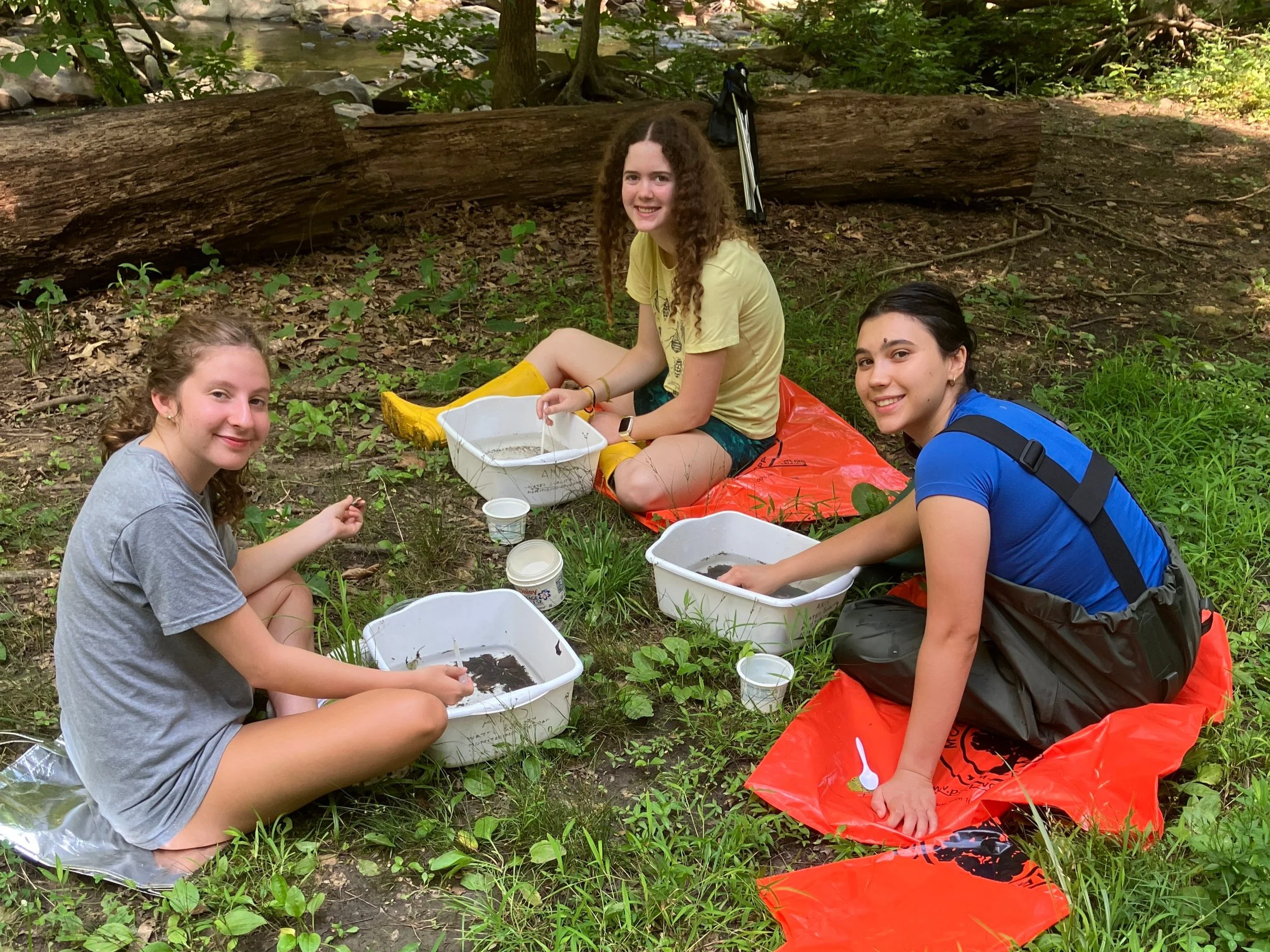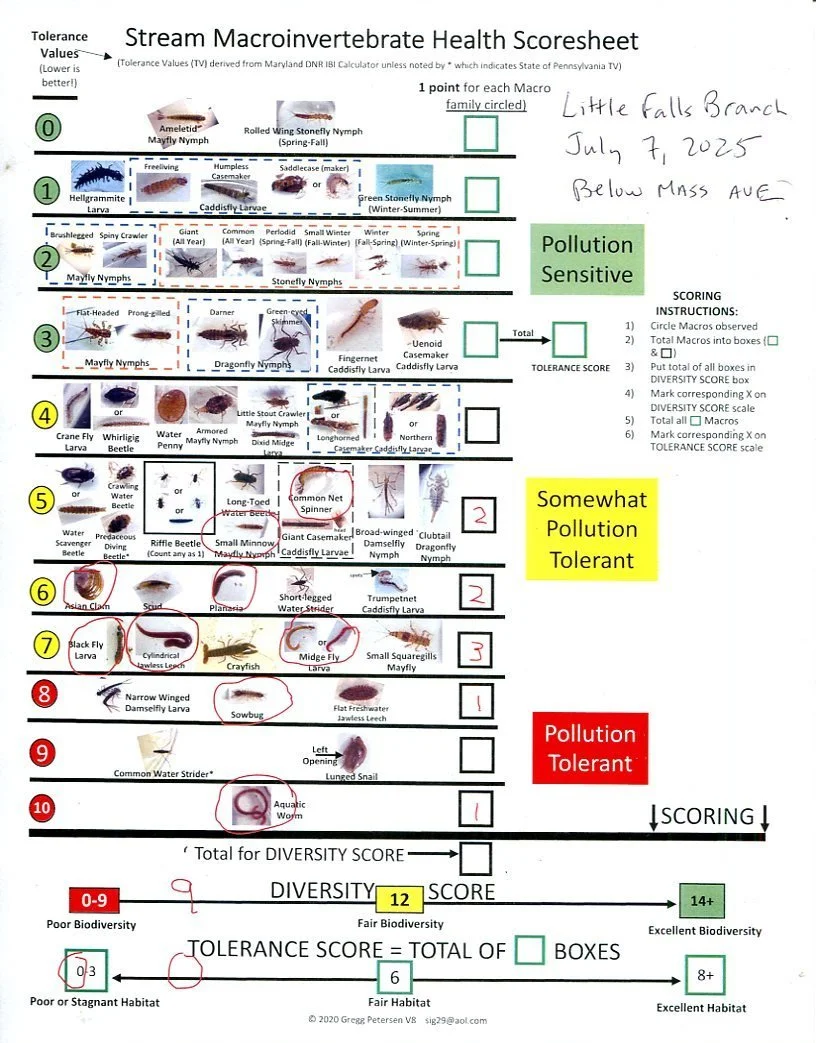On Saturday, July 6, our stream team did the summer sampling for benthic macroinvertebrates in the Little Falls Creek. Planaria were the star of the show accounting for more than a third of the organisms we found. Small Minnow mayflies were also found in abundance. We found nine different species in all, giving the creek BIBI score of 2.1 which puts it in the very low Fair category.
By sampling the creek for macroinvertebrates we are able to tell a lot about the biological health of the creek. The main things we look for are 1) species diversity and 2) pollution tolerance of the organisms we find. Greater species diversity generally means more interconnectedness and complexity within an ecosystem, allowing it to better withstand disturbances and maintain essential functions - thus a healthier stream. We also know that some species are more tolerant of pollution than others. So, if we are seeing only pollution tolerant species, we can tell that the stream is experiencing stress from some type of pollution.
What is the Main Pollution?
Our creek suffers from excess silting. When it rains, all the storm water run-off from the impervious surfaces goes directly to the creek. The volume and velocity of the rain water run-off causes severe erosion of the creek banks. The dirt from the banks covers the creek bottom and destroys the habitat that the macroinvertebrates call home. This sediment or silt - the tiny particles of dirt, sand, and clay floating in the water - may not seem like a big deal - it’s just dirt, but sediment is one of the major causes of decline in the health of our waterways and one of the primary pollution in the Chesapeake Bay. Besides burying the organisms that live on the bottoms of the creek and Bay, too much mud in the water blocks the sunlight needed for plant growth.
Storm Water Management to Keep the Water out of the Storm Drain System
One thing that residents can do to prevent flooding and erosion from storms is to keep their storm water on their property instead of directing it to the street and storm drain system. A dry well or a rain garden or pervious pavement driveway are all things that home owners can install to allow the water from their gutters and roofs to go into the ground instead of into the creek. Visit RainScapes.org for ideas and information about the rebates that Montgomery County offers for these types of projects.
Notes from the Field
Thanks to our YOUNG monitors who kept the "gracefully aging" monitors on track for a successful summer monitoring. Although our quality score will not challenge other sites, our PR was "out of the park!" (or out of the stream). My new toy - digital microscope with screen - seemed a success - until the battery charge gave out.
Below are the numbers - Sarah M was happy to see our 'Big Beautiful Leeches" increasing!
Cylindrical leeches - 4
Aquatic worms - 2
Planaria - 38
Asian clam - 1
Aquatic sowbugs - 3
Chironomidae - 9
Black fly - 12
Common netspinner - 9
Small minnow mayfly (Baetis) - 26


